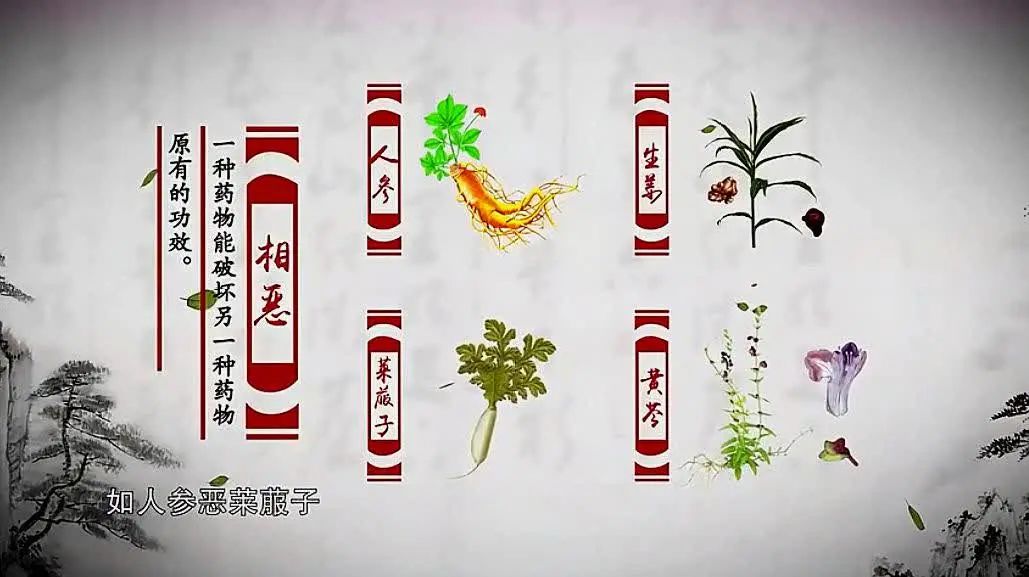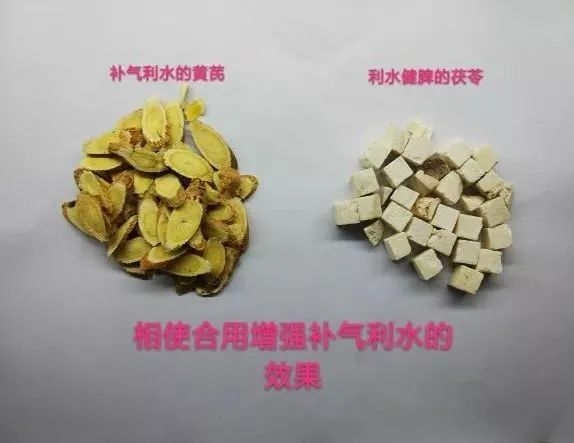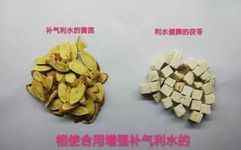 Using medicine to treat illness is akin to employing troops in battle; the tasks differ, and so do the types and numbers of troops. Therefore, in Chinese medicine, while some conditions can be treated with a single herb, more often, a combination of multiple herbs is required to achieve therapeutic effects. The more complex and severe the illness, the more intricate the herbal formulation tends to be, leading to the concept of compatibility in Chinese herbal medicine, known as the “Seven Relationships”.The Shen Nong Ben Cao Jing (Divine Farmer’s Materia Medica) summarizes the compatibility of various herbs into seven categories: single use, mutual assistance, mutual promotion, mutual restraint, mutual antagonism, mutual killing, and mutual opposition.Single Use: This refers to using a single herb to treat a specific condition. For relatively simple ailments, often a single targeted herb suffices to achieve the treatment goal. For example, the ancient formula Du Shen Tang (Ginseng Decoction) uses only Ren Shen (Ginseng) to treat critical conditions caused by significant blood loss leading to Qi deficiency; Qing Jin San (Clearing Metal Powder) uses only Huang Qin (Scutellaria) to treat lung heat and bleeding. Other examples include Ma Chi Xian (Portulaca) for dysentery, Xia Ku Cao (Selfheal) for goiter, Yi Mu Cao (Leonurus) for regulating menstruation and alleviating pain, He Cao Ya (Herba Aristolochiae) for expelling tapeworms, Chai Hu (Bupleurum) injection for inducing sweating and relieving fever, and Dan Shen Pian (Salvia Tablets) for treating chest pain.Mutual Assistance: This involves combining two herbs with similar effects to enhance the efficacy of the original herb. For instance, Ma Huang (Ephedra) combined with Gui Zhi (Cinnamon Twig) enhances the effects of sweating and dispelling wind-cold; Zhi Mu (Anemarrhena) with Chuan Bei (Fritillaria) enhances the effects of nourishing Yin, moistening the lungs, and resolving phlegm; Fu Zi (Aconite) with Gan Jiang (Dried Ginger) enhances warming Yang and rescuing from collapse; Chen Pi (Tangerine Peel) with Ban Xia (Pinellia) strengthens the effects of drying dampness, resolving phlegm, and regulating Qi. Such examples of similar herbs working together form the core of compound herbal formulations and are one of the main forms of herbal compatibility.Mutual Promotion: This refers to using one herb as the main ingredient and another as an auxiliary, where the auxiliary herb enhances the efficacy of the main herb. For example, Huang Qi (Astragalus) combined with Fu Ling (Poria) treats spleen deficiency and edema, with Huang Qi being the main herb for strengthening the spleen and promoting urination, while Fu Ling enhances these effects; Da Huang (Rhubarb) with Mang Xiao (Mirabilite) treats heat-induced constipation, with Da Huang being the main herb for clearing heat and promoting bowel movements, while Mang Xiao enhances this effect; Gou Qi Zi (Goji Berries) with Ju Hua (Chrysanthemum) treats dim vision, with Gou Qi Zi being the main herb for nourishing the kidneys and improving vision, while Ju Hua clears the liver and benefits the eyes. This illustrates the concept of mutual promotion where the auxiliary herb enhances the main herb’s effects.
Using medicine to treat illness is akin to employing troops in battle; the tasks differ, and so do the types and numbers of troops. Therefore, in Chinese medicine, while some conditions can be treated with a single herb, more often, a combination of multiple herbs is required to achieve therapeutic effects. The more complex and severe the illness, the more intricate the herbal formulation tends to be, leading to the concept of compatibility in Chinese herbal medicine, known as the “Seven Relationships”.The Shen Nong Ben Cao Jing (Divine Farmer’s Materia Medica) summarizes the compatibility of various herbs into seven categories: single use, mutual assistance, mutual promotion, mutual restraint, mutual antagonism, mutual killing, and mutual opposition.Single Use: This refers to using a single herb to treat a specific condition. For relatively simple ailments, often a single targeted herb suffices to achieve the treatment goal. For example, the ancient formula Du Shen Tang (Ginseng Decoction) uses only Ren Shen (Ginseng) to treat critical conditions caused by significant blood loss leading to Qi deficiency; Qing Jin San (Clearing Metal Powder) uses only Huang Qin (Scutellaria) to treat lung heat and bleeding. Other examples include Ma Chi Xian (Portulaca) for dysentery, Xia Ku Cao (Selfheal) for goiter, Yi Mu Cao (Leonurus) for regulating menstruation and alleviating pain, He Cao Ya (Herba Aristolochiae) for expelling tapeworms, Chai Hu (Bupleurum) injection for inducing sweating and relieving fever, and Dan Shen Pian (Salvia Tablets) for treating chest pain.Mutual Assistance: This involves combining two herbs with similar effects to enhance the efficacy of the original herb. For instance, Ma Huang (Ephedra) combined with Gui Zhi (Cinnamon Twig) enhances the effects of sweating and dispelling wind-cold; Zhi Mu (Anemarrhena) with Chuan Bei (Fritillaria) enhances the effects of nourishing Yin, moistening the lungs, and resolving phlegm; Fu Zi (Aconite) with Gan Jiang (Dried Ginger) enhances warming Yang and rescuing from collapse; Chen Pi (Tangerine Peel) with Ban Xia (Pinellia) strengthens the effects of drying dampness, resolving phlegm, and regulating Qi. Such examples of similar herbs working together form the core of compound herbal formulations and are one of the main forms of herbal compatibility.Mutual Promotion: This refers to using one herb as the main ingredient and another as an auxiliary, where the auxiliary herb enhances the efficacy of the main herb. For example, Huang Qi (Astragalus) combined with Fu Ling (Poria) treats spleen deficiency and edema, with Huang Qi being the main herb for strengthening the spleen and promoting urination, while Fu Ling enhances these effects; Da Huang (Rhubarb) with Mang Xiao (Mirabilite) treats heat-induced constipation, with Da Huang being the main herb for clearing heat and promoting bowel movements, while Mang Xiao enhances this effect; Gou Qi Zi (Goji Berries) with Ju Hua (Chrysanthemum) treats dim vision, with Gou Qi Zi being the main herb for nourishing the kidneys and improving vision, while Ju Hua clears the liver and benefits the eyes. This illustrates the concept of mutual promotion where the auxiliary herb enhances the main herb’s effects. Mutual Restraint: This refers to one herb’s toxic side effects being suppressed by another herb. For example, Ban Xia (Pinellia) is restrained by Sheng Jiang (Fresh Ginger), which can mitigate Ban Xia’s toxic effects; Gan Sui (Euphorbia) is restrained by Da Zao (Jujube), which can reduce Gan Sui’s harsh purgative effects; Shu Di Huang (Rehmannia) is restrained by Sha Ren (Amomum), which can alleviate Shu Di Huang’s cloying effects on digestion; Chang Shan (Dichroa) is restrained by Chen Pi, which can relieve the gastrointestinal reactions caused by Chang Shan. These are examples of mutual restraint in herbal compatibility.Mutual Killing: This refers to one herb eliminating the toxic side effects of another herb. For instance, Jin Qian Cao (Lysimachia) can neutralize the toxicity of Lei Gong Teng (Tripterygium); She Xiang (Musk) can neutralize the toxicity of Xing Ren (Apricot Kernel); Lu Dou (Mung Bean) can neutralize the toxicity of Ba Dou (Croton); Sheng Bai Mi (Raw Honey) can neutralize the toxicity of Wu Tou (Aconite); Fang Feng (Saposhnikovia) can neutralize the toxicity of Arsenic. Thus, mutual restraint and mutual killing are not qualitatively different; they are two perspectives on the same compatibility relationship.Mutual Antagonism: This refers to one herb undermining the efficacy of another herb. For example, Ren Shen (Ginseng) is antagonized by Lai Fu Zi (Radish Seed), which weakens Ginseng’s Qi-invigorating effects; Sheng Jiang (Fresh Ginger) antagonizes Huang Qin (Scutellaria), which can weaken Ginger’s warming and anti-nausea effects. Modern research shows that Wu Zhu Yu (Evodia) has antihypertensive effects, but this effect disappears when combined with Gan Cao (Licorice), indicating that Wu Zhu Yu antagonizes Gan Cao.Mutual Opposition: This refers to two herbs that, when used together, can produce severe toxic side effects. For example, Gan Cao (Licorice) opposes Gan Sui (Euphorbia), and Bei Mu (Fritillaria) opposes Wu Tou (Aconite).In addition to single use, mutual assistance and mutual promotion can synergize to enhance efficacy, which is a common method in clinical practice; mutual restraint and mutual killing can reduce or eliminate toxic side effects, ensuring safe medication, especially when using herbs with strong toxic side effects. Mutual antagonism occurs due to the antagonistic effects of herbs, which can negate or weaken the efficacy of one herb; mutual opposition indicates interactions that can lead to toxic reactions or severe side effects, thus mutual antagonism and mutual opposition are contraindications in herbal compatibility.Li Shizhen summarized in the Ben Cao Gang Mu (Compendium of Materia Medica) that: “Herbs have seven relationships: single use, which does not require assistance; mutual assistance, which cannot be separated; mutual promotion, which is my assistant; mutual antagonism, which deprives my ability; mutual restraint, which is controlled by the other; mutual opposition, which does not harmonize; and mutual killing, which controls the poison of the other.”Understanding the seven relationships in herbal compatibility not only enhances efficacy and expands the application range of herbs but also reduces toxic side effects, adapting to complex conditions. This knowledge is a fundamental quality that a pharmacist should possess.
Mutual Restraint: This refers to one herb’s toxic side effects being suppressed by another herb. For example, Ban Xia (Pinellia) is restrained by Sheng Jiang (Fresh Ginger), which can mitigate Ban Xia’s toxic effects; Gan Sui (Euphorbia) is restrained by Da Zao (Jujube), which can reduce Gan Sui’s harsh purgative effects; Shu Di Huang (Rehmannia) is restrained by Sha Ren (Amomum), which can alleviate Shu Di Huang’s cloying effects on digestion; Chang Shan (Dichroa) is restrained by Chen Pi, which can relieve the gastrointestinal reactions caused by Chang Shan. These are examples of mutual restraint in herbal compatibility.Mutual Killing: This refers to one herb eliminating the toxic side effects of another herb. For instance, Jin Qian Cao (Lysimachia) can neutralize the toxicity of Lei Gong Teng (Tripterygium); She Xiang (Musk) can neutralize the toxicity of Xing Ren (Apricot Kernel); Lu Dou (Mung Bean) can neutralize the toxicity of Ba Dou (Croton); Sheng Bai Mi (Raw Honey) can neutralize the toxicity of Wu Tou (Aconite); Fang Feng (Saposhnikovia) can neutralize the toxicity of Arsenic. Thus, mutual restraint and mutual killing are not qualitatively different; they are two perspectives on the same compatibility relationship.Mutual Antagonism: This refers to one herb undermining the efficacy of another herb. For example, Ren Shen (Ginseng) is antagonized by Lai Fu Zi (Radish Seed), which weakens Ginseng’s Qi-invigorating effects; Sheng Jiang (Fresh Ginger) antagonizes Huang Qin (Scutellaria), which can weaken Ginger’s warming and anti-nausea effects. Modern research shows that Wu Zhu Yu (Evodia) has antihypertensive effects, but this effect disappears when combined with Gan Cao (Licorice), indicating that Wu Zhu Yu antagonizes Gan Cao.Mutual Opposition: This refers to two herbs that, when used together, can produce severe toxic side effects. For example, Gan Cao (Licorice) opposes Gan Sui (Euphorbia), and Bei Mu (Fritillaria) opposes Wu Tou (Aconite).In addition to single use, mutual assistance and mutual promotion can synergize to enhance efficacy, which is a common method in clinical practice; mutual restraint and mutual killing can reduce or eliminate toxic side effects, ensuring safe medication, especially when using herbs with strong toxic side effects. Mutual antagonism occurs due to the antagonistic effects of herbs, which can negate or weaken the efficacy of one herb; mutual opposition indicates interactions that can lead to toxic reactions or severe side effects, thus mutual antagonism and mutual opposition are contraindications in herbal compatibility.Li Shizhen summarized in the Ben Cao Gang Mu (Compendium of Materia Medica) that: “Herbs have seven relationships: single use, which does not require assistance; mutual assistance, which cannot be separated; mutual promotion, which is my assistant; mutual antagonism, which deprives my ability; mutual restraint, which is controlled by the other; mutual opposition, which does not harmonize; and mutual killing, which controls the poison of the other.”Understanding the seven relationships in herbal compatibility not only enhances efficacy and expands the application range of herbs but also reduces toxic side effects, adapting to complex conditions. This knowledge is a fundamental quality that a pharmacist should possess.
Text/Editor: Zhang Xiaopei

